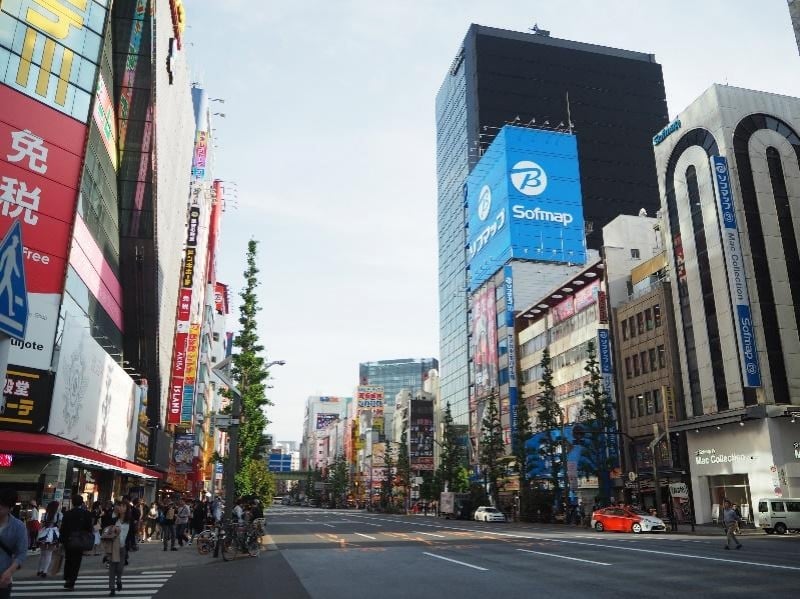
Glitzy electronics, anime goods, and maid cafes. Known as the mecca of anime and the forerunner of Japan’s pop culture to otaku and non-otaku alike, Akihabara is probably what comes to mind when people think of what’s cool, hip, and sometimes weird in Japan.
Yet there is a place in this trendy neighbourhood so well-hidden that many locals and visitors do not know about — and those who do deem it as Akihabara’s secret. Hanabusa Inari Shrine or Akihabara’s secret shrine may not be on the Tokyo itineraries of many travellers, but it remains a must-see for the curious adventurer.
Founded in the Edo period and rebuilt at its current location after World War II, the Hanabusa Inari Shrine is dedicated to Uda no Omachi, a deity of food. Probably like so many things around the world, this shrine has been lost to the rapid changes of time, having been overtaken by the far more attention-grabbing visuals and architectural structures of the modern era.
Having read many stories about it online however, I wanted to find and uncover this secret for myself. Of course, while the shrine has since found itself on Google Maps since its rather muted rise in popularity, it would most definitely spoil the fun of finding it if one was to just follow a map. Instead, I relied on some blog posts and videos of those who had made the visit to figure out my way there.

Akihabara’s Don Quixote — Hanabusa Inari Shrine is just a short walk away from this department store.
From what I’ve gathered from resources online, the first landmark to go by was Akihabara’s Don Quixote. From Akihabara JR station, this wasn’t a difficult place to get to, since it was along the main road of the area as well. Walking past shops blaring J-pop songs and “maids” trying to lure customers to their cafe, it’s hard to believe that a shrine (of all things!) could be right in the midst of all these.
A traditional place of worship, one would usually associate Japanese shrines with tranquillity and serene surroundings — a definite contrast to the vibrant hub that is Akihabara. Such a contrast, I assume, would be the appeal of finding Hanabusa Inari Shrine, as it somewhat opens a fascinating facet of Japanese pop culture.

The hustle and bustle of modern Akihabara
The next step after going past Don Quixote seemed to be to turn right into the next road that ran parallel to the main road. The key was now to find the narrow alleyway through which the shrine may be accessed. After making a few wrong turns and attempting to find a matching alley to the pictures I saw online, I soon stumbled on one that seemed to match them.
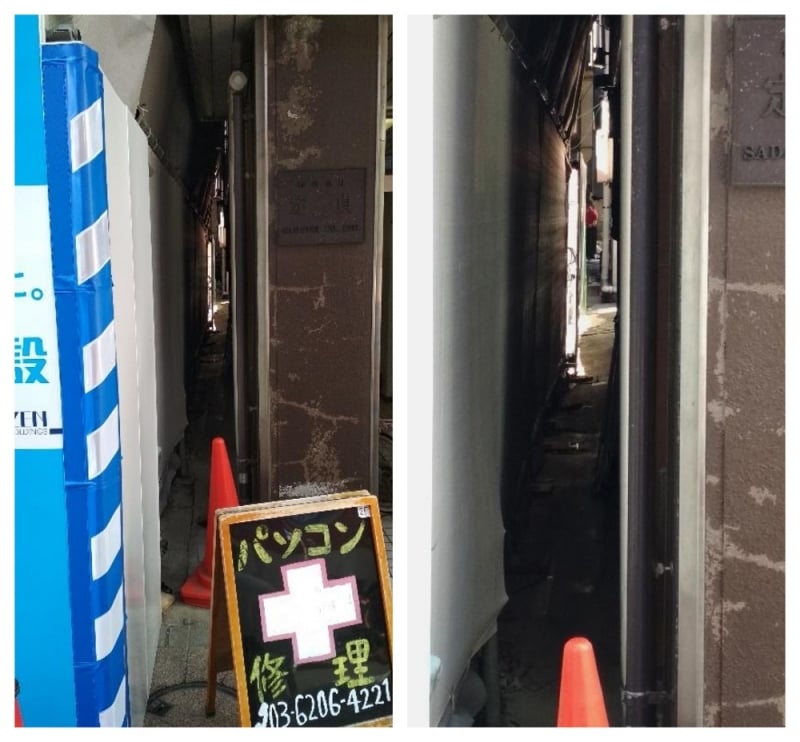
No way was I going through this alley
The passage was really narrow, so narrow that I would most definitely have to crab-walk my way through (and I’m not fat; at least I hope I’m not). Unlike the pictures online, however, one of the buildings beside was undergoing construction, and the scaffolding only made the alley less convenient to enter. Deciding not to risk my safety (if anything should fall on me from the construction), and with less than full certainty that the shrine awaited me inside this rather dark passageway, I decided not to head in. I was at the start of my stay in Tokyo, and most certainly had no plans to die or get robbed in a shady alleyway despite my curiosity.
But surely there should be another way through? I decided to see if I could get to the other end of the alley for another way in. I turned back to the main road and continued walking down past a few more shops until I reached the next crossing. This was just before the second “Liberty” shop that I had passed by from Akihabara Station.

The next road leading in from that of the narrow alley
Sure enough, the other side of the alley was open and considerably wider. Still unsure if I had gotten the right alley (no blog post I read talked about this entrance), I walked through and was shortly greeted with what I was searching for.
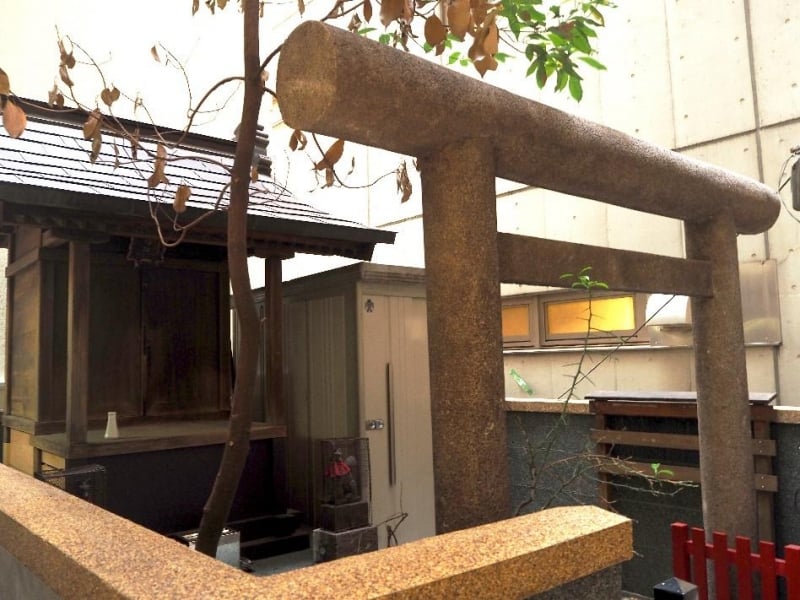
Hanabusa Inari Shrine (Note: Photo has been brightened)
Bordered on all sides by tall buildings that towered over it, Hanabusa Inari Shrine was shrouded in a permanent shade, almost akin to a sapling that had lost out to its now overgrown siblings around it (and true enough, the one lone tree in it wasn’t growing too well).
It wasn’t a fancy affair like many other shrines I had seen, having a single torii gate that led into a small compound no bigger than a bedroom one would find in land-scarce Tokyo. The shrine itself was also only slightly bigger than a fancy one that can be found in a house, though its wooden construction gave a withdrawn look of age. A pair of Inari fox statues also stood at the foot of the shrine, as if guarding the shrine from within their wire cages.
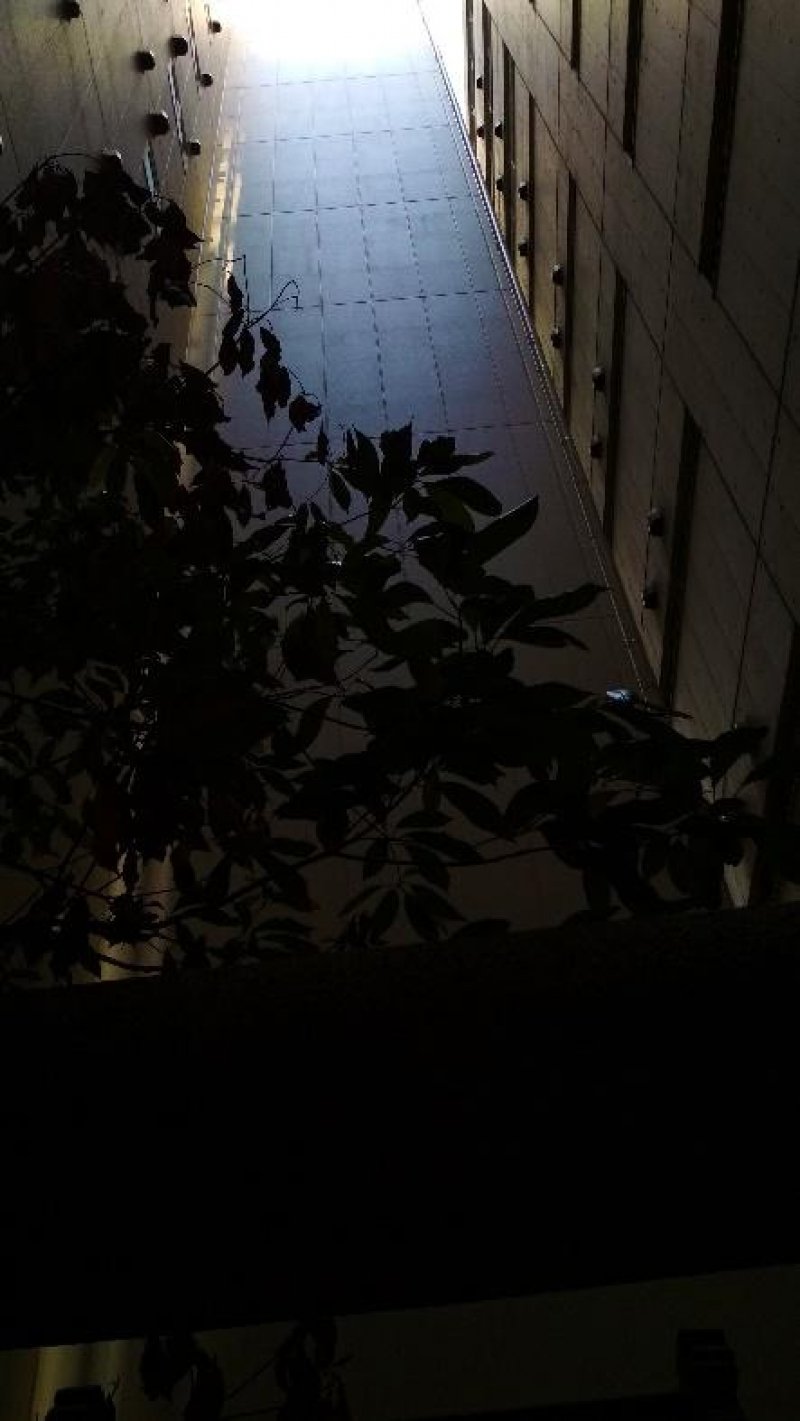
Light barely got through this long tunnel down to the shrine
My joy in finding the shrine was short-lived, however, as I realised that I wasn’t alone. A man donning a wind-breaker (probably middle-aged) was at the shrine, too. Though his hands were in the offering box, I assumed that he wasn’t a visitor, but more so the caretaker of the shrine.
Being in a dark deserted alleyway however, it probably had been best not to approach him and strike a conversation (he might just be a drunk digging for money, for all I know). I decided to leave the alleyway quietly while he still had his back towards me.
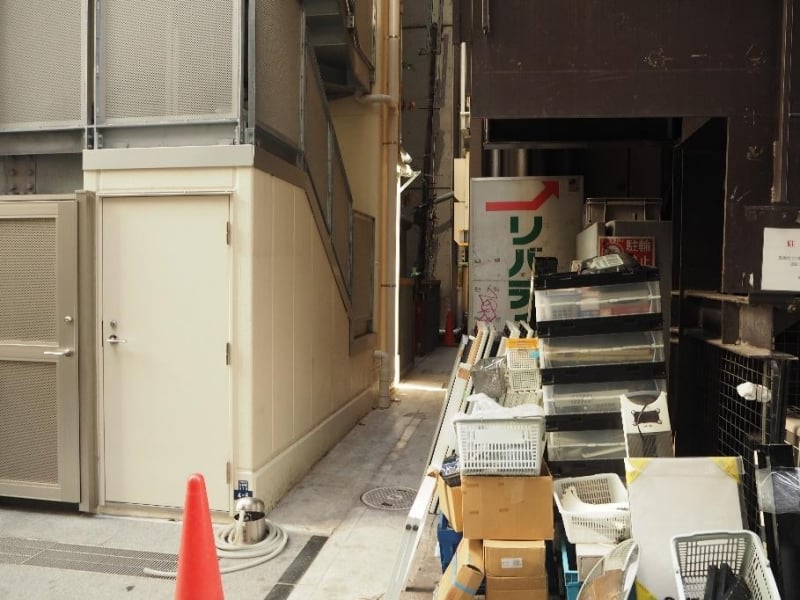
The other end of the alleyway — you can just about make out the fences of the shrine after the flight of stairs.
I headed back out of the alley, where the buzz and hustle of the city flooded my senses again. Despite the echoes of the world outside, the shrine was secluded in its own realm — a serene albeit gloomy sanctuary amid the glitz and glamour of Japanese pop culture. At the nearby gallery of gacha and vending machines, a pair of foreigners posed excited for a photo, just mere steps away from what I had found.
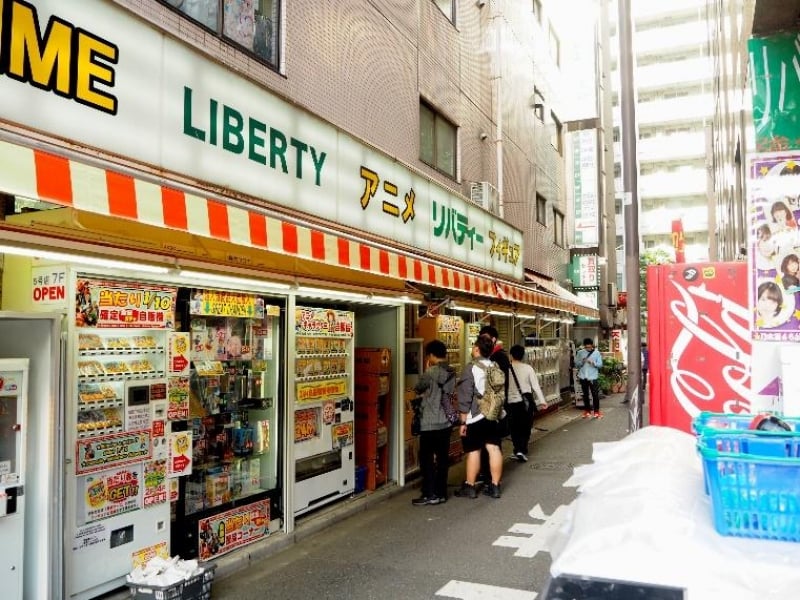
The plethora of prize machines, just mere steps away from the shrine.
Did they know about the shrine, or was I privy to its secret existence? I thought better against telling them about the shrine, for fear they might think that I’m just going to lead them into the alley to rob them. No, I guess I’ll be fine keeping this secret to myself for now; let others discover this hidden treasure for themselves (at least sharing about it on an online platform might prove to be less suspect!).
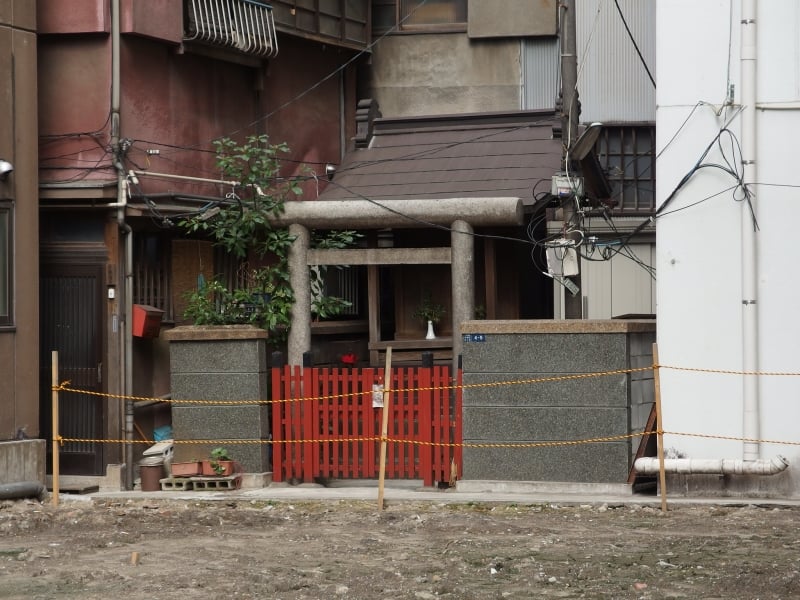
Hanabusa Inari Shrine, back in 2014 when it wasn’t cut off from the public | Image credit: Guilhem Vellut
Hanabusa Inari Shrine presents itself as another reason why I love Japan. The modern-day and age-old coexist in a tenuous balance, both threatening to overwhelm the other yet never completely eradicating it. Even as traditions modernise with the times, it really is heartening to see how the roots of Japanese culture remain strong in the country. And before you go thinking that you might not find them, know that they are actually much closer than you think.
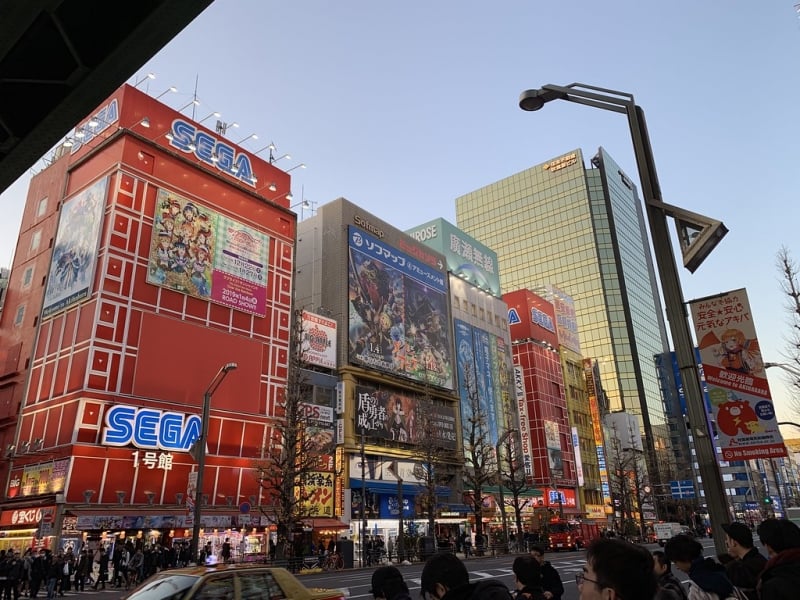
Image credit: nakashi
While the Hanabusa Inari Shrine wouldn’t be the first thing I’d recommend to go see in Tokyo, it is definitely a neat secret to uncover for yourself to appreciate another of Japan’s cultural nooks.
Also read: The Otaku’s Guide to Akihabara, Tokyo




